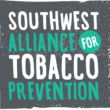Released by CADCA
Jan 31, 2013
Issues: Alcohol Advertising, Binge Drinking, Underage drinking
Coalition resources: Data Analysis
Drug type: Alcohol
Seeing beer and liquor ads on TV may promote drinking as early as seventh grade and lead to alcohol-related problems just a few years later, a new study suggests.
The more ad exposure the teens reported — and the more they enjoyed the commercials — the more they drank by 10th grade, the researchers found.
“This study provides evidence that exposure to alcohol advertising in seventh grade and liking those alcohol advertisements on television is associated with higher levels of drinking in the eighth and ninth grades,” lead researcher Jerry Grenard, an associate professor in the School of Community and Global Health at Claremont Graduate University in California, told HealthDay.
This early drinking is associated with the development of alcohol-related problems, such as fighting or academic decline, by 10th grade, he said.
“Examples of problems include failing to do homework, attending school drunk, passing out and getting into fights,” Grenard said.
While the research doesn’t prove that liquor advertising caused the drinking, Grenard said drinking by young teens was less prevalent before the heyday of TV liquor advertisements. Policy makers should work with the alcohol industry to limit adolescents’ exposure to alcohol advertising, Grenard added.
For the report, published online Jan. 28 in the journal Pediatrics, Grenard’s team recruited nearly 4,000 seventh graders and questioned them about use of beer, wine or liquor and exposure to liquor advertising. They kept tabs on many of the students through 10th grade. Overall, the more ads seventh graders watched and the more they liked them, the more they drank from seventh to 10th grade, they found. Seventh graders who watched these ads, especially girls, were more likely to start drinking. And boys who liked the advertisements were more likely to develop alcohol-related problems, Grenard’s group found. Grenard believes the ads influence seventh graders to drink as they move on in school. Of the seventh graders recruited for the study, 57 percent had never tried alcohol or only a little, he noted.
“Therefore, we were able to assess exposure to advertising before many students began to drink alcohol regularly,” Grenard said. A
nother paper in the same journal issue found that too few doctors counsel adolescents about the dangers of drinking. That 2010 study of 10th graders — led by Ralph Hingson from the Eunice Kennedy Shriver National Institute of Child Health and Human Development — found that 36 percent drink, 28 percent binge-drink and 23 percent were drunk in the past month.
Although 82 percent had seen a doctor and 54 percent were asked about drinking, only 17 percent were counseled to reduce or stop drinking, the researchers found.
The researchers concluded that “efforts are warranted to increase the proportion of physicians who follow professional guidelines to screen and counsel adolescents about unhealthy alcohol use and other behaviors that pose health risks.”



